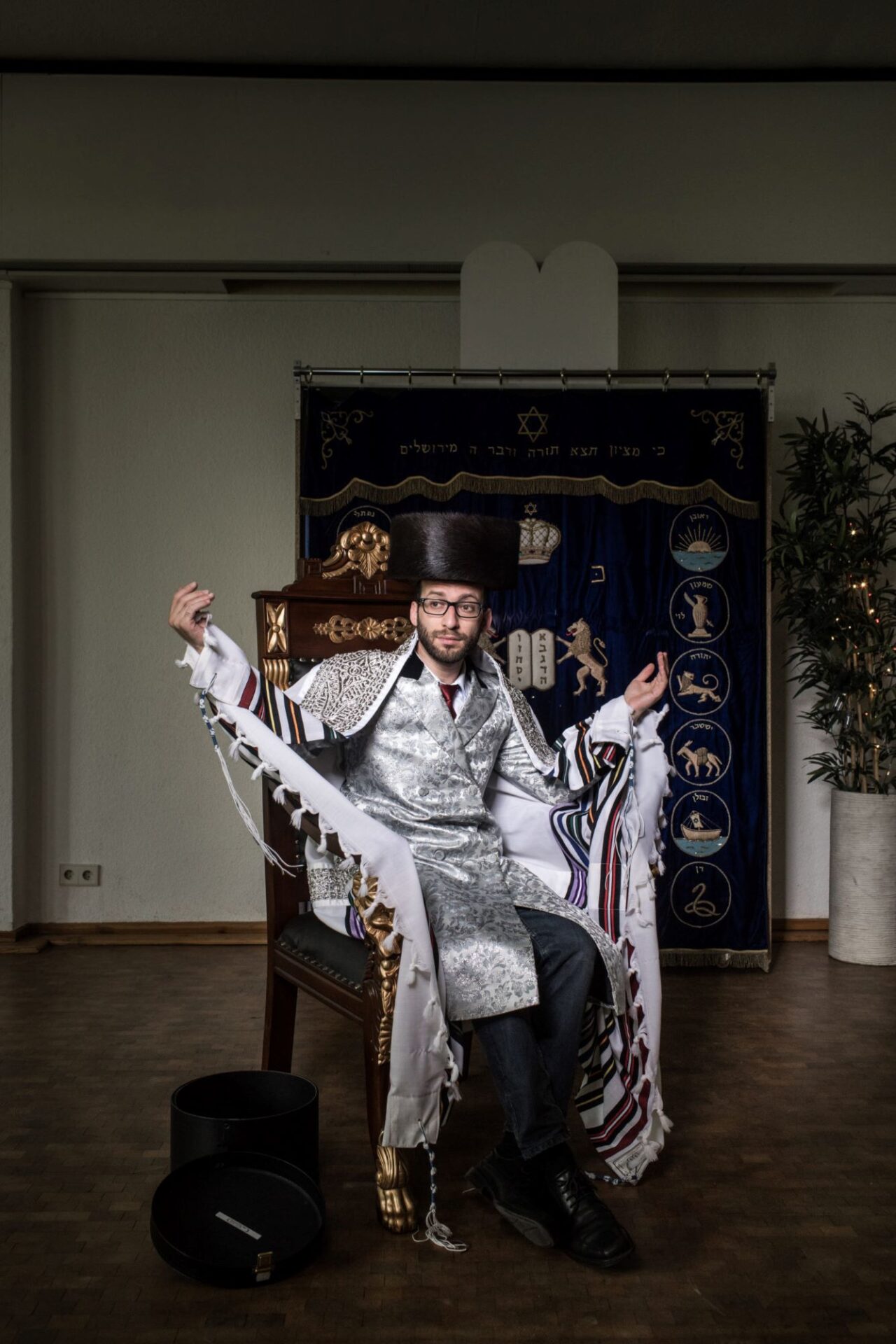«I cut a shtreimel in half and sewed two shirts together»
Five Questions for
Akiva Weingarten
Rabbi Akiva Weingarten describes himself by the unlikely term «liberal-chassidic.» He left the ultra-orthodox Satmar community in 2014 and in 2019 became the rabbi of both Migwan in Basel and of the Jewish community in Dresden. Days before the pandemic began, he founded the Besht Yeshiva in Dresden, which supports ex-charedis. This year, he published his biography, Ultra-Orthodox. Naomi Lubrich spoke with him about his path, his plans, and his famous portrait.
Naomi Lubrich: Akiva, your book «Ultra-Orthodox» came out this year. Why did you write it?
Akiva Weingarten: I am an ex-charedi, a so-called OTD, the acronym for people who are «off the derech» (English: Off the path). With this topic in the eye of the media, I gave several interviews, among others to Spiegel, Deutsche Welle, and Arte. A publisher read the articles and suggested I write a biography. So I did. The past two years have been intensive. Besides writing the book and serving two communities, I founded a yeshiva to help other OTDs find entry into majority society.
NL: That is a great responsibility! What are their immediate needs?
AW: People who leave the charedi community need schooling in sciences and languages, a high school diploma, and a supportive infrastructure. There are many who want to leave, and it is hard to help them all. We currently have a waiting list of 106 people who need support. We don’t even reach out in any active way. We don’t advertise. People come to us via word of mouth. They used to be mostly young, unmarried men, many of whom were gay. Now the majority are women.
NL: Can the Jewish communities help?
AW: To some extent they do, but projects such as these need funding, and in Germany, social politics are usually governmental. It’s hard to break into the charitable structures with a new endeavor.
NL: You work between Germany and Switzerland. How are the communities different?
AW: The Swiss communities are old and well-established; they have shared values and responsibilities transmitted over generations. The German communities are new, they are often run by recent arrivals, some of whom have little to no first-hand Jewish heritage. It is remarkable how striking national differences between the communities can be: Take intermarriage, one of the most pressing questions today. It is the reason that many communities in Europe are shrinking. But in the United States, the communities that have a welcoming attitude to intermarriage are growing. They pay a price though, in form of concessions to the halacha, the religious law.
NL: Your portrait by Frédéric Brenner has become quite a thing in the museum scene. How did you get the idea for a picture with half a beard and half a shtreimel?
AW: [laughs] Actually, I was inspired by a photo I saw online of a non-Jewish man who had shaved half of his hair and beard. Asked why, he answered: «Because I can.» That’s a great attitude. And it seemed perfect for adaptation by Frédéric and me. So I cut a used shtreimel in half and sewed two shirts together. It was fun.
NL: I can imagine! Akiva, Thank you very much for your visit.
verfasst am 29.09.2022
Photo: Stephan Pramme



